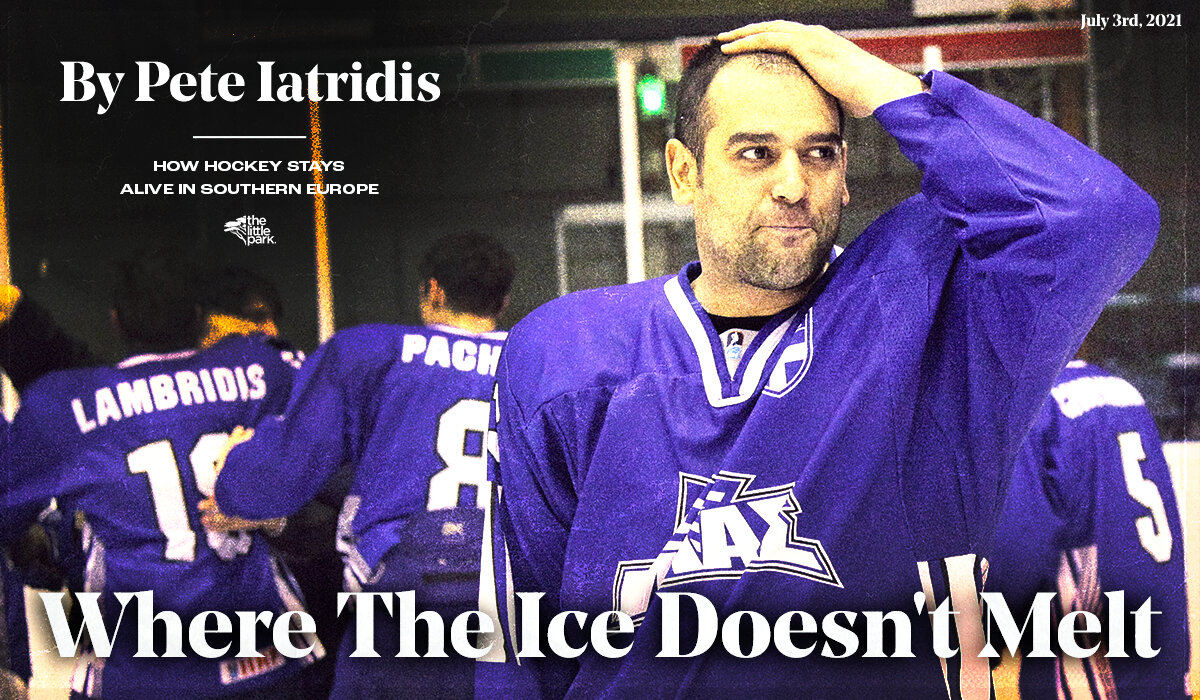The Game Within the Game - MLB Service Time and Covid-19
Nate Pearson made his impressive major league debut Wednesday July 28, 2020, throwing five scoreless innings and striking out five, reaffirming for many Toronto Blue Jays fans that he belongs in the team’s starting rotation. However, despite being among the most talented pitchers in the organization, and by all accounts ready to make an impact at the Major League level, Pearson was left off of the opening day roster. Instead, he was placed on the three-man taxi squad to start the season. Ultimately, the decision to leave Pearson off the opening day roster was a business decision, not a baseball decision, providing significant benefits to the team. By delaying Pearson’s addition to the active roster, the Blue Jays are set to gain an extra year of team control and delay Pearson’s first foray into unrestricted free agency until 2026, and gain additional cost control.
Pearson’s placement on the three-man taxi squad was integral to the Blue Jays gaining an extra year of team control. As noted by Sportsnet.ca’s Ben Nicholson Smith, it permitted him to travel with the team, but prevented him from being eligible to play and meant he was unable to accrue service-time. Service-time considerations are important to both players and teams because it dictates when players receive the right to salary arbitration and when they are eligible for unrestricted free agency. Under the Collective Bargaining Agreement, one full year of service-time, or Major League service as it is termed, is defined as 172 days on a major league team’s active roster. However, the MLB season must span between 182 and 186 days. As a result, a player need not be on the active roster every day of the season to accrue a full year of service-time. Once a player has accrued three full years of service-time they gain salary arbitration rights and after a player has accrued six years of service-time they are eligible for unrestricted free agency.
There is one further wrinkle with regard to arbitration rights that exists for players that have accrued more than two, but less than three years of service-time, and that may assist Nate Pearson with his earning capacity. “Super Two” players are eligible for salary arbitration after this second full year of service-time where: (1) they have accumulated 86 days of service-time in the previous season; and (2) rank in the top 22% of service-time in the class of players with at least two but less than three years of service-time. While the player’s team gains an extra year of team control, the player attains salary arbitration rights for four years instead of three.
As a result of the COVID-19 pandemic, and the resulting shortened season, the owners and the MLBPA were forced to reconsider the terms under which a COVID-shortened season would be played, including conditions regarding the accrual of service-time. In the hope that some portion of the season would be played, the owners and the MLBPA agreed in March to a set of stipulations for proceeding during the pandemic. As reported by Joel Sherman of the New York Post, amongst the terms agreed upon was that service-time would be prorated based on the number of games in the season.
Based on a season of 60 games the prorated total for a full year of service-time was set at 62 days. As per Nicholson Smith in an article for Sportsnet.ca, by adding Pearson to the active roster on Wednesday, the Blue Jays ensured that Pearson can accrue a maximum of 61 days, meaning he will fall short of the required 62 days required to accrue a full year of service-time by just one day. Pearson will therefore qualify for unrestricted free agency after the 2026 season instead of after the 2025 season, as he would have if the Blue Jays had added Pearson to the active roster on July 27, 2020.
The benefits of adding Pearson to the active roster on July 28, 2020 extend beyond adding the extra year of team control. The Blue Jays have also ensured additional cost control over those seven seasons by potentially delaying Pearson’s eligibility for salary arbitration and delaying when he qualifies for unrestricted free agency. First, should Pearson not qualify as a Super Two the Blue Jays have added an additional year of pre-arbitration control. Pre-arbitration eligible players are at the mercy of the team when it comes to determining their salary. Teams are free to renew the player’s contract at their sole discretion as long as that salary is not below the league minimum and does not represent more than a 20% decrease of the player’s salary from the previous year or a 30% reduction from the two seasons prior. The ability to renew Pearson’s contract will provide significant cost savings for the Blue Jays, compared to a salary Pearson could negotiate if he had arbitration rights or was an unrestricted free agent.
If Nate Pearson qualifies as a Super Two, the Blue Jays will still have gained a year of control, but Pearson will have the benefit of salary arbitration rights for that extra year. While arbitration rights provide more leverage for players, the balance of power still lies with the team that holds their rights. During the years when players are arbitration eligible, salaries are negotiated, or determined by an arbitrator, in relation to what statistically similar players have received in the same year of arbitration eligibility. As a result, the salaries earned during those arbitration years are still lower that what those players would be able to attain through unrestricted free agency.
For a recent Blue Jays example, let us use former Blue Jay Marcus Stroman to illustrate the benefit to the player of gaining the extra year of arbitration. After the 2016 season Stroman qualified as a Super Two and received arbitration rights. He signed a contract to play the 2017 season on a salary of $3,400,000. Had he not qualified as a Super Two the Blue Jays would have been entitled to renew his contract based on the $515,910, he earned in 2016, which would have been a significant cost savings for the Blue Jays.
Further, the benefit to the team is even more pronounced if you compare the contract Stroman was awarded by an arbitrator after the 2016 season with what Major League teams paid for similar value on the free agent market. According to Baseball Reference, Stroman was worth 1.4 Wins Above Replacement (“WAR”), a statistic aimed at determining the value provided by a player in relation to a replacement level player. Based on a calculations performed Matt Swartz in a piece for Fangraphs, teams paid an estimated $10,500,000 per 1.0 WAR on the Free agent market in 2017. Albeit an imperfect method for determining what Stroman’s value on the free agent market could have been, it nevertheless generally indicates that Stroman could have earned significantly more on the free agent market than the $3,400,000 he earned through arbitration. This difference illustrates the benefit teams gain by delaying free agency.
Because the impact of accruing service-time is so significant, the manipulation of service-time has long been a source of frustration for the MLBPA. By and large teams do what the Blue Jays did with Pearson and send their top prospects to the minors to begin the season until they are unable to accrue a full year of service-time. Generally, this is done under the pretense of further development or, sometimes in the case of pitchers, managing innings and workload. To this point, the MLPBA and its membership have had little to no success in preventing Major League teams from doing this or any luck using the grievance procedure set out in the CBA.
One high profile and contentious example of service-time manipulation occurred with Kris Bryant and the Chicago Cubs. As reported by Jeff Passan, writing for Yahoo Sports at the time, Bryant filed a grievance against the Cubs in 2015 alleging that they had manipulated his service-time with the intention of delaying his free agency by a year in a manner that was contrary to the spirit of the CBA. At the start of the 2015 season the Cubs sent Bryant down the to the minors to begin the season, under the pretense that he needed further time to develop. Subsequently, the team called him up nine games into the major league season, which, also noted by Passan, only allowed him to accrue only 171 days of service-time, which left him one day shy of a full year under the CBA after playing the rest of the season. At the end of January 2020, Jeff Passan, now of ESPN, confirmed that an arbitrator ruled in favour of the Cubs, finding that the Cubs did not violate any of the rules relating to service-time in the CBA.
Although similar to Kris Bryant’s situation with the Cubs, what makes Pearson’s situation particularly galling is that without a minor league season he had no development opportunity and the drastically shortened season means limiting his innings was likely not a significant consideration. This leaves service-time as the only real reason for the decision to leave Pearson off the roster until the day after he would have accrued enough service-time to reach unrestricted free agency after the 2025 season. Nevertheless, based on recent history, there is little chance the Blue Jays will face any repercussions for this decision.
The rules, as they currently stand, incentivize teams to prioritize Service-time considerations when making roster decisions with their top prospects. In Nate Pearson’s case, by delaying his promotion, the Blue Jays traded five days on the roster this season to acquire a full extra year of Pearson’s services, which is a sound business decision. As frustrating as it is for fans when player personnel decisions are based on service-time considerations instead of talent, until players and owners negotiate different terms under a new CBA these are the types of decisions major league teams will continue to make.












